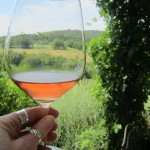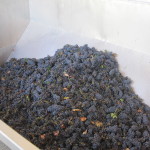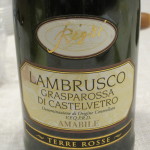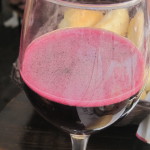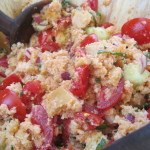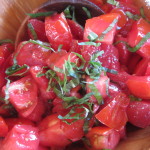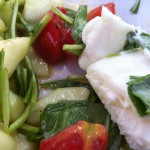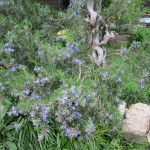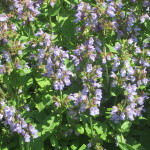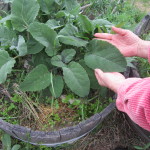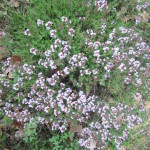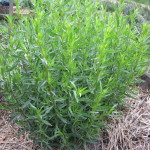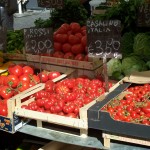 There is nothing better than a ripe, deep red summer tomato, fresh from your garden or the local farmers market. They were late to market here in Louisville KY, where I moved from Italy last year, but when they finally arrived they were a joy.
There is nothing better than a ripe, deep red summer tomato, fresh from your garden or the local farmers market. They were late to market here in Louisville KY, where I moved from Italy last year, but when they finally arrived they were a joy.
As good as they are, however, they can’t match the sweetness of the little tomatoes grown in the volcanic soil of Sicily and Napoli. 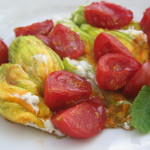 Anyone who has visited me for a cooking class in Italy has tasted them; small grape tomatoes bursting with juicy sweetness, when they’re heated through for a simple fresh tomato basil sauce or warmed in the oven to top goat cheese-stuffed zucchini blossoms, they are virtually vegetable candy!
Anyone who has visited me for a cooking class in Italy has tasted them; small grape tomatoes bursting with juicy sweetness, when they’re heated through for a simple fresh tomato basil sauce or warmed in the oven to top goat cheese-stuffed zucchini blossoms, they are virtually vegetable candy!
Much is made of San Marzano tomatoes from the Campania region and for good reason. Grown in the volcanic soil on the slopes and in the valley of Mt Vesuvius, one of Italy’s many active volcanoes, they are meaty and sweet with a particular flavor not found in any other tomato. Several brands are found on the market but it’s best to get the ones from Italy that have a DOP stamp, designating them as officially inspected by the consortium of San Marzano DOP and a guarantee of origin and quality. Gustiamo out of NY has some great product they bring from Italy.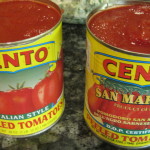
My grandmother had San Marzano seeds from her hometown in Campania and grew the tomatoes in her garden in the heart of Brooklyn. I remember the canned filets of tomato she put on her pizza and have been trying to recreate that taste for years. These tomatoes make a wonderful pizza sauce, the less they’re cooked the better.
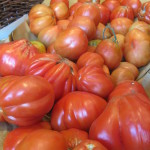 There are a number of different kinds of tomatoes in Italy. None of them are called “heirloom” because growing them isn’t a lost tradition, it’s a continual way of life that extends back centuries.
There are a number of different kinds of tomatoes in Italy. None of them are called “heirloom” because growing them isn’t a lost tradition, it’s a continual way of life that extends back centuries.
There are a host of American Italian tomato sauce recipes that call for sugar, which is an ingredient much less widely used in Italy and never ever found in a tomato sauce. The origins of sugar in Italian “gravy” (I shudder to use the word) come from the acidic canned tomatoes that the Italian immigrants found when they arrived in the 1900’s. Sugar in the form of sucrose was needed to replace the natural fructose that the US tomatoes lacked. That’s not necessary in today’s market when you can get delicious tomatoes right from Italy in any number of good brands.
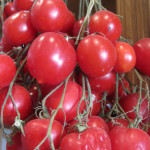 Here are a couple of my favorite recipes using luscious summer tomatoes. They’re simple and with just a few ingredients. In fact, they’re identical, one is heated and used as a sauce for pasta and the other is served fresh in a salad, with a good loaf of bread to sop up the juices.
Here are a couple of my favorite recipes using luscious summer tomatoes. They’re simple and with just a few ingredients. In fact, they’re identical, one is heated and used as a sauce for pasta and the other is served fresh in a salad, with a good loaf of bread to sop up the juices.
Happy tomato season and Buon Appetito!
Sugo di Pomodoro e Basilico Fresco (fresh tomato and basil) 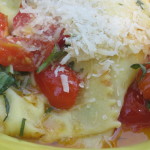
2 cups fresh roma or grape tomatoes
2 cloves garlic
Sea salt
Olive oil
2 tbsp fresh basil, chopped or torn
Gently sauté the garlic in olive oil until soft, add chopped tomatoes and sauté a few minutes, adding salt to taste. Add the chopped basil and toss with cooked pasta, topping with Parmigiano before serving.
Fresh Tomato Salad
3 large ripe tomatoes, cut into chunks
2 garlic cloves, whole
Sea salt
Extra virgin olive oil
2 tbsp fresh basil, chopped or torn
Toss all ingredients together and allow to sit for at least 30 minutes. Fresh ground black pepper can be added, although a good quality Tuscan olive oil should be peppery enough. Serve with great bread for sopping up the juices.
